Keith Lindsay says...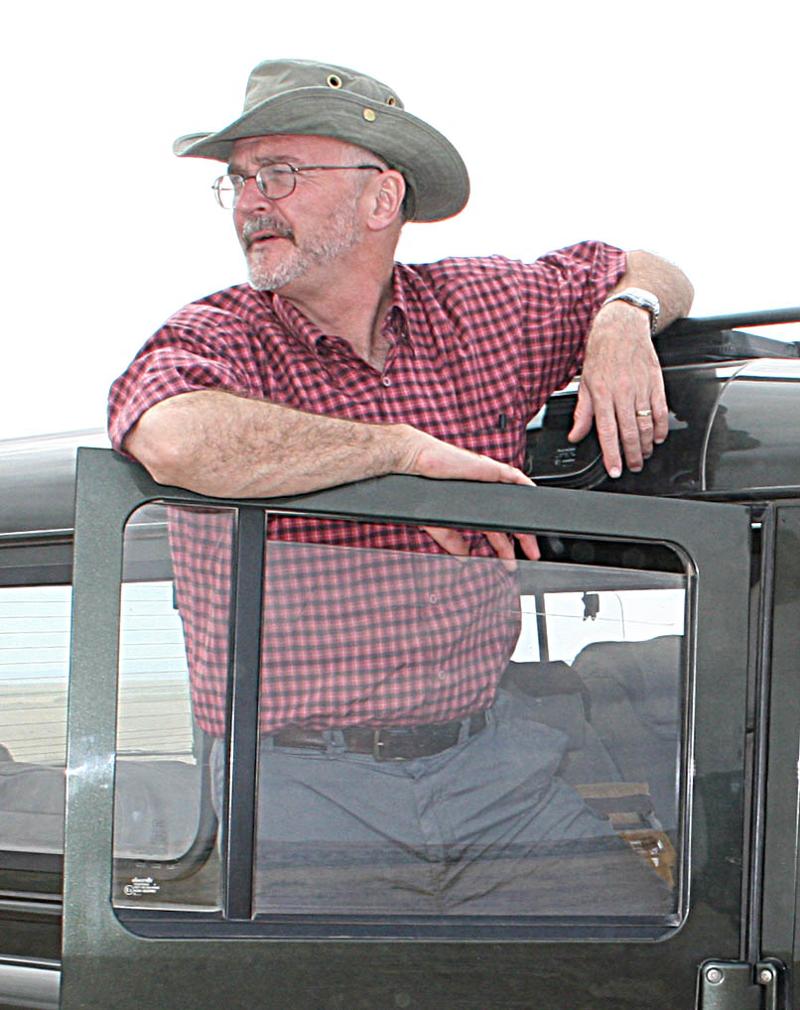 Care to Donate now? Dr. Keith Lindsay acts as our Chief Ecologist and is a member of ATE's Scientific Advisory Committee |
Dr. Winnie Kiiru
We are very pleased to announce that Winnie Kiiru has been awarded a Ph.D. from the University of Kent.
Winnie faced huge challenges to obtain this degree. She is a "mature" student, married with two sons and many responsibilities for her large extended family. We know how hard it was for her to secure the funds, find the time, be away from home for long periods, and just to keep going. Well done, Winnie. We're very proud of you.
|
|
|
Betsy Swart Pays us a Visit
|
 | |
Betsy in the field with Katito & Norah
|
Our Executive Director in the US, Betsy Swart, works exceedingly hard to keep ATE financially secure and in compliance with all the regulations and stipulations for charitable organizations in the US.
We are so pleased that from time to time she is able to travel to Africa to see the elephants she is so dedicated to. This particular trip has been particularly rewarding for Betsy because the last time she was here the elephants were still recovering from the drought. This time she was able to see fat, relaxed elephants with 173 new calves.
|
|
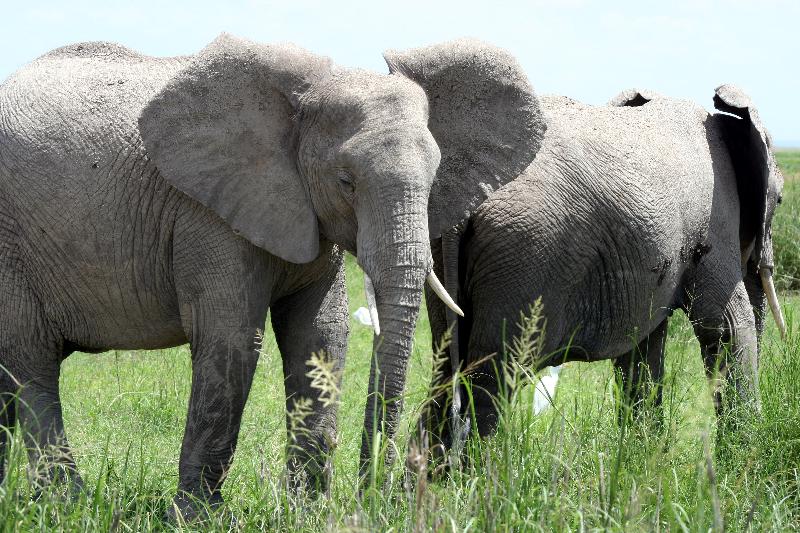 | |
The Amboseli elephants are almost up to their ears in long grass
|
| |
Rainfall for the Amboseli Year
| |
For the first time in several years Amboseli has received higher than average rainfall. In our "rainfall year" which runs from October through September we receive an average of 340mm or 13 inches. So far this year we've had 492.5 mm (19 inches).
It's hard to convey just how much this means to us. Rain brings times of plenty and times of peace. The elephants have more than enough to eat, but just as important the Maasai livestock are also experiencing the abundance. With so much vegetation available the elephants and the cattle, sheep and goats are spread out over the ecosystem, only meeting each other infrequently with the result that there is very little competition and conflict.
|
|
Big Life Report
|
Our partners in the Amboseli ecosystem, the Big Life Foundation, are working round the clock to stop poaching. See one of their latest reports.
We hate to think what the situation would be without the Big Life scouts. Not only are they controlling the killing of elephants but they have reduced the slaughter of other wild animals, such as zebras, giraffes and elands, for meat. This so-called "bushmeat" was not for subsistence but rather was sold commercially in an extensive illegal enterprise. |
|
Featured Article
|  | |
A leading ecologist in South Africa, Rudi van Aarde, recently reviewed our book in the journal Ecology. We are very pleased, indeed, with what he said:
The book is thus more than a compilation of published
scientific papers. It is encyclopedic and will provide a standard reference for academics, students, and decision makers for many years to come. It illustrates how the impossible can be
achieved through focused, long-term research initiatives. The book is also one of a kind for a large and long-lived mammal species. Cynthia Moss and the many scientists who supported her vision need to be congratulated and thanked for their sterling contributions to our understanding of the biology of Africa's most significant icon, the elephant.
|
|
New YouTube Videos
The Amboseli Trust for Elephants has its own channel on YouTube. Check out our latest videos. One of the new ones shows a calf being rescued in a river. Note how the older experienced Orabel has to come in to show them how it's done. This is the link.
| |
|
|
Archive of Past Newsletter
| |
Don't forget you can find all the past newsletters on our website at: this link
|
|
|
News from the Amboseli Trust for Elephants
May-June 2012
|
Greetings!
I have just returned to Kenya after six weeks in the US seeing supporters, friends and relatives. I want to thank everyone who hosted me or me and Betsy Swart, our Executive Director in the US, when she was touring with me. Everyone was so hospitable and generous with their time.
It was a good trip but I am very happy to be back home. I am writing this now from my tent in Amboseli. I am pleased to report that it is still amazingly green in the Park considering that it is the end of June. I saw one group of elephants as we drove to camp on the day I arrived. In the single GB family there were 12 calves! Later they passed through camp with two other families: the OBs with five calves and the EAs with eight calves. What fun these calves have, and what a delight they are to watch.
Betsy has come out from the US to join the team for 10 days. Her day-to-day job of running our US office is an extremely important one, but she definitely needs an infusion of elephant viewing from time to time. She is getting that and more. Today she saw the most amazing interaction between elephants and lions including six tiny cubs.
It is a wonderful time to visit Kenya and I encourage you to come. By being a tourist you support local people, Kenya's economy and conservation.
Cynthia Moss
DirectorAmboseli Trust for Elephants |
|
 | |
Unnamed calves from the EB family
|
The Baby Boom Continues
The baby boom started on October 12, 2011 and has kept us very busy over the last eight months. By the end of December 2011, 46 calves had been born. In the first six months of 2012, another 137 arrived making 173 in all. The last two months have seen a slight slowdown, but new babies are still being recorded.
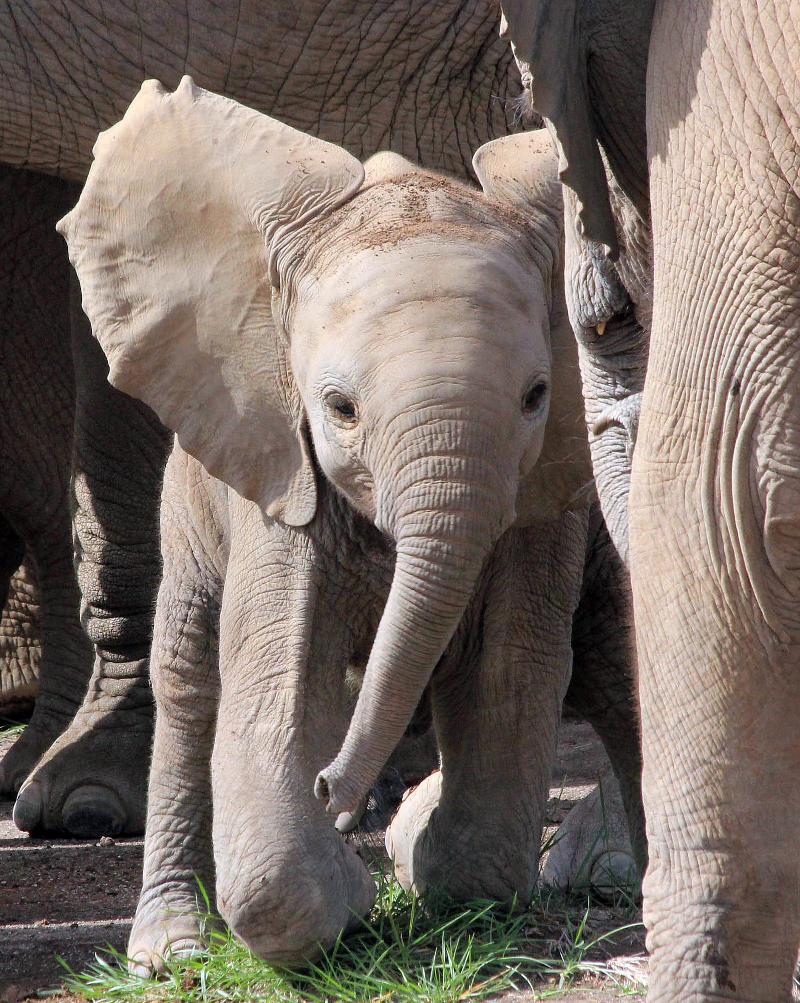 | | One of the new LB calves |
A few families have as many as 12 calves. They are nearly impossible to keep track of. When they leave their mothers and form little gangs we can't distinguish them, which makes carrying out censuses very difficult. However, we're not really complaining, we're just so pleased that the families are recovering and putting the horrible losses of the 2009 drought behind them.
Many donors have requested to name these calves as well as some of the older ones and in recent months over 40 calves have been named. Usually we don't name calves until they are four years old because the survival rate of calves under this age is not as high as older calves, but with so many new calves we've had to change our policy temporarily.
Anyone interested in naming a calf can see how the program works on our website by clicking here.
|
Elephant Politics by Vicki Fishlock
Elephant social relationships are built on the value of individuals. Because of this, our IFAW-supported social disruption study uses data from the whole population, and detailed leadership data on 12 of the Amboseli families. To study leadership and negotiation you have to be able to track and monitor the location of everyone in the group. This isn't possible unless you know the individuals well - I have to be able to look up from my notebook and know where everyone is instantly, as well as read the behaviour of the elephants.
The 12 study families I am concentrating on suffered a mixture of fortunes in the 2009 drought. Some of them did reasonably well, others were devastated. Some of them, like the GB family, have already radically changed their family structure as a result of the drought and the losses they experienced; other families are in the process of change. I am looking at the ways in which these changes manifest themselves. One of those ways involves leadership.
Previous research at Amboseli has shown that older females are better at discriminating threats and responding appropriately to keep their families safe. Our long-term data show that families with older matriarchs have a higher reproductive output per female - that means that all the females in family have calves faster, and those calves are more likely to survive. We think this is because older females make smarter choices about where and when to move across the ecosystem with the result that the females in those families are in better physical condition and can reproduce faster.
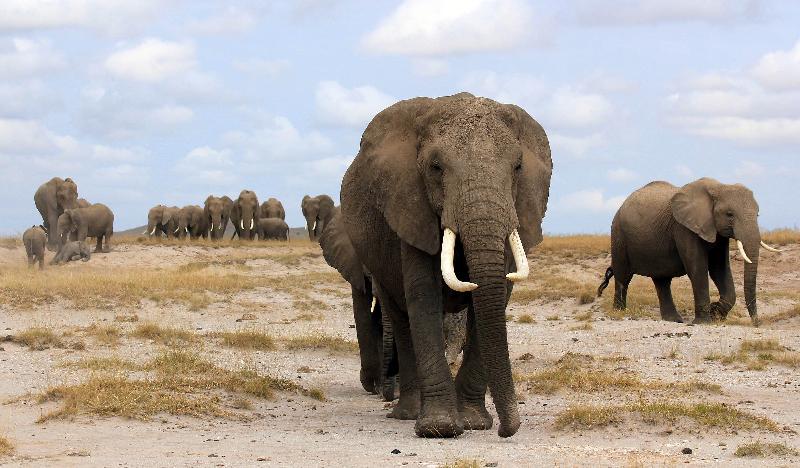 | | At 48 years old, beautiful Felicity of the FBs, is a very experienced matriarch |
Decisions about where to go are often made by a process of consensus within the family. A resting family will usually be grouped around sleeping calves. Older females sleep standing up, often resting on one another. The waking-up process usually begins with younger adults, who stretch, yawn and shuffle about. One by one the rest of the family will wake, and begin dust-bathing, or plucking a few mouthfuls of vegetation. Young calves are roused by a gentle foot or trunk, which may elicit a groggy rumble of protest. Usually one female will move to the edge of the group, facing the direction she wants to travel. One by one, other females will join her, indicating their agreement. Another female might try and persuade the family to travel somewhere else, by moving to face a different direction. Disagreement is often accompanied by vocalisations, particularly contact calls. Females might also begin a greeting ceremony, to reinforce their relationship and elicit support for their choice of destination.
The matriarch is usually not part of this process, and often appears to be aloof at this point. However, the family does not move until she is ready, and certain matriarchs can keep the rest of the family waiting thirty minutes or more. If she agrees with the direction that has been chosen, she will move which prompts the family to begin travelling, usually with her at the rear. On the other hand, a whole period of negotiation by the rest of the family can be completely overruled when a matriarch disagrees with the destination. These are my favourite times, watching the ensuing "battle of wills". Who wins is sometimes surprising and it makes studying elephants endlessly fascinating.
|
|
Like us on our Amboseli Trust for Elephants Facebook page
|
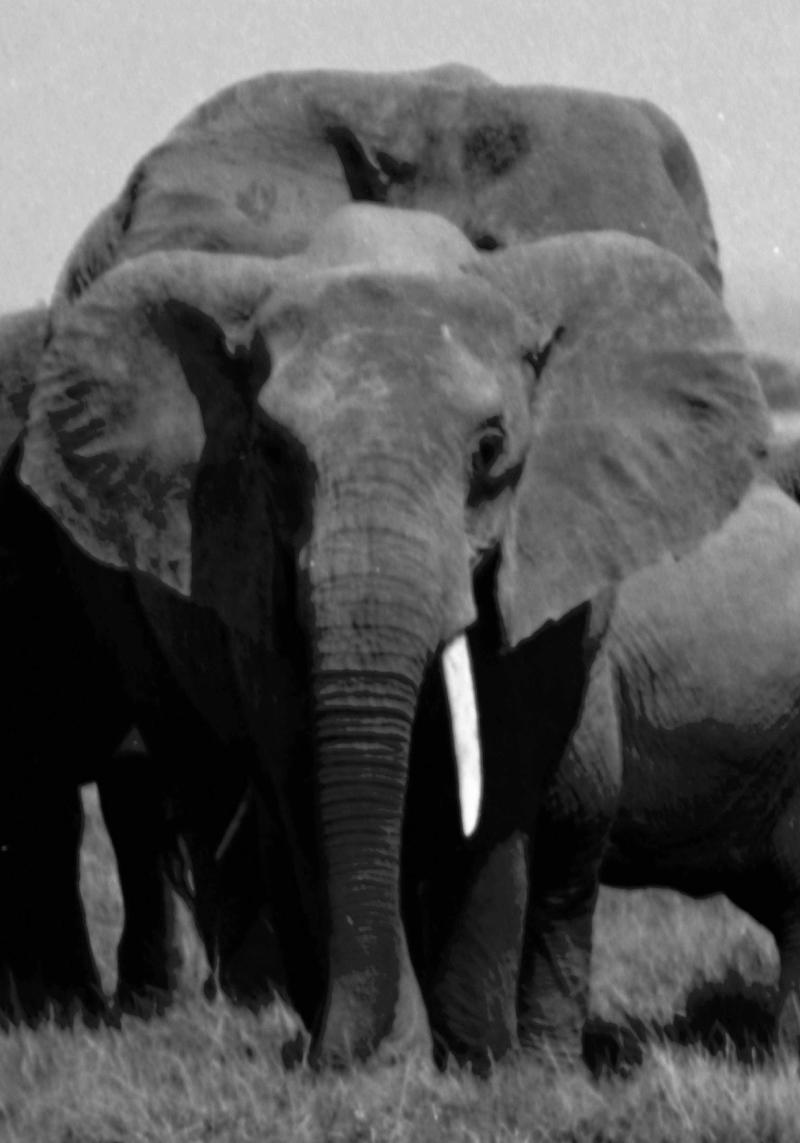 | |
Phoebe in 1973
|
The History of the PA Family
The PA family has always been big and fluid and frequently confusing. It was the first family in the population to permanently split into two; there have been others since then but it is not a common occurrence. Up until 1982 the Ps, as they were called then, made up the largest family in the Amboseli population. They were a magnificent group when my colleague Harvey Croze and I first saw them on October 20, 1973. There were so many big adult females that it was all we could do to just photograph them on that day. Two months later Iain Douglas-Hamilton went to Amboseli and took several rolls of film of a big elephant herd and turned the film over to us. Most of the herd consisted of the Ps and Iain's photos helped us sort out the various females and their calves. However, it was not really until 1975 and 1976 that I got to know them well.
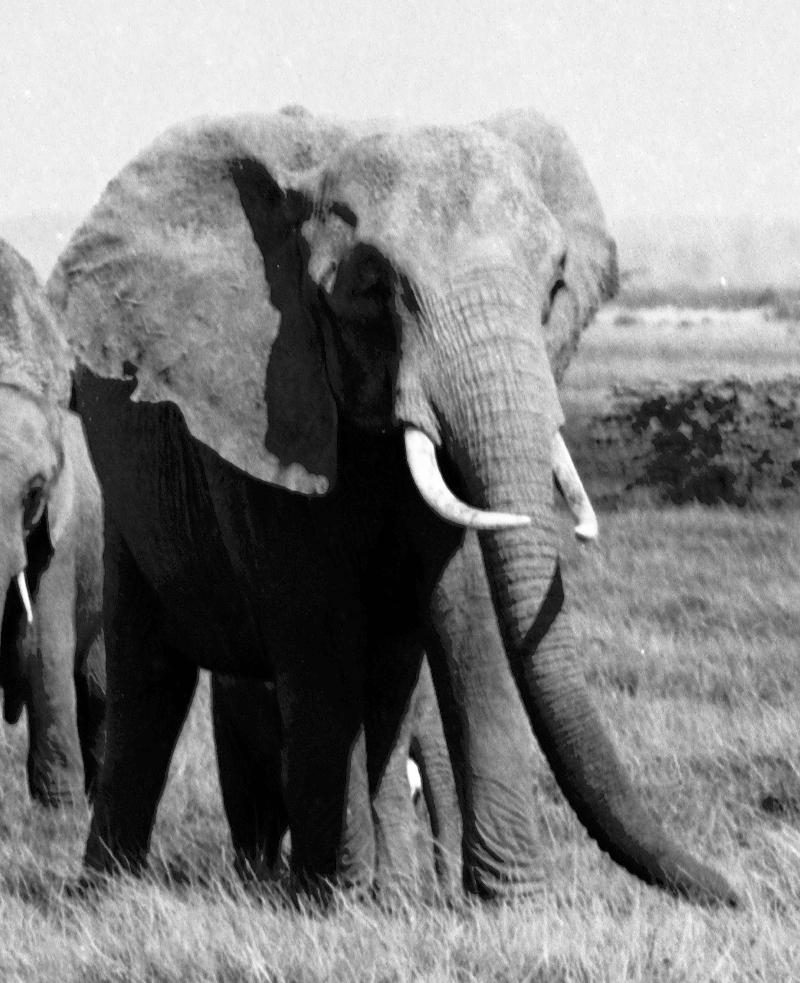 | |
Penelope in 1973
|
When I began to live in the Park in September 1975 I knew the Ps contained at least six big females and two teenaged females. All these animals were named. We decided that Penelope was the matriarch because she usually led the group and the others seemed to orient towards her. The next largest was a left one-tusk animal we called Phoebe, then there were four medium-sized females: Philomena, Patricia, Phyllis and Polly. One of the teenaged females had been named Pick, because she had a funny little right tusk, and the other was called Pamela. Pick appeared to be Phoebe's daughter and Pamela Philomena's.
To read the whole history of the PA family go to this link.
|
|
Amboseli Book Chapter Summary: 4. Population Genetics
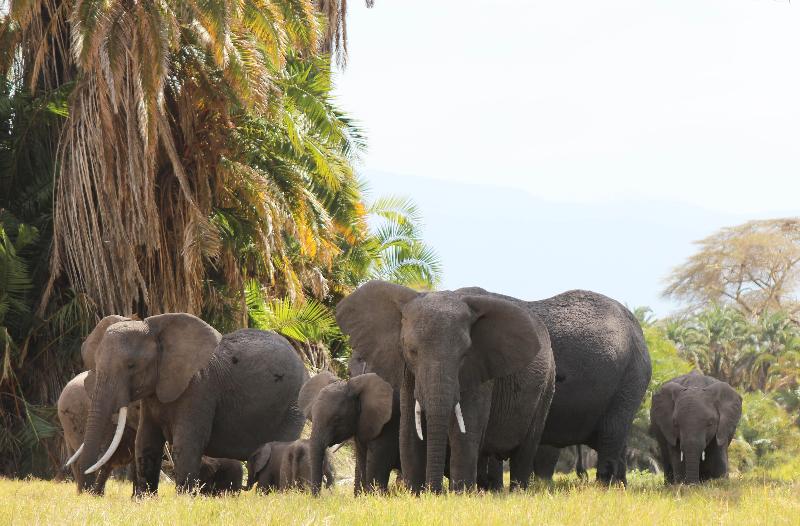 | |
Amboseli families are genetically intact
|
Chapter 4, The Population Genetics of the Amboseli and Kilimanjaro Elephants, explores the evolutionary history of the elephants living in the Amboseli ecosystem. It uses the analytical tools from population genetics, an area of biology that infers evolutionary processes from patterns of genetic diversity in populations.
We first review how elephant behavior--especially mate choice and dispersal patterns--shape the structure of genetic diversity in elephant populations. We then explore the genetic connections between the elephants in Amboseli and Kilimanjaro, and the genetic history of these populations in the context of other elephant populations across Africa.
Almost all genetic information on the Amboseli and Kilimanjaro elephants was discovered using DNA extracted from elephant dung. This method is ideal because dung can easily be collected without disturbing the elephants. But it presents methodological challenges in collectioning and genotyping, which we explain in a special section.
Facts:
- Poaching causes many females to lose their relatives, sometimes forcing them to form new families with non-kin.
- The founding genetic matrilines (lines of female decent) in Amboseli occur in several other elephant populations across Africa, suggesting that elephants in the past were wide-ranging, with high levels of movement between populations. For example, the Kilimanjaro elephants have one matriline that so far is only also found in Kruger National Park, South Africa.
- The Amboseli and Kilimanjaro elephants are not genetically distinct: they share some founding genetic matrilines and are members of one continuous population.
In sum, the Amboseli elephants represent one of the most genetically intact populations in Africa, where females are still able to live together with their maternal relatives in families and bond groups.
Poaching and habitat fragmentation are increasingly disrupting the behavior and genetic structure of wild elephants. Conservation efforts must focus on maintaining corridors for movement between populations.
|
|
|
In this newsletter there is only one reference to poaching and that is in the sidebar linking to the Big Life site. It is true that poaching has decreased around Amboseli thanks to the local Maasai scouts, Big Life and the Kenya Wildlife Service. However, we can not be complacent. The illegal trade in ivory seems to be even worse than ever. Apparently China has an insatiable hunger for ivory products. Huge shipments of ivory are being discovered every couple of weeks. Unfortunately, we know that these confiscations are only a fraction of what is getting through to China.
In the banner photo at the top of this newsletter there are two huge bulls fighting. They are Sioma and Qaboos. Sadly, both disappeared in the last few years almost certainly killed by poachers. We still have some big bulls in Amboseli, most notably Ezra, Tim, Tolstoy, Craig and Little Male, but we constantly worry about their safety. We feel strongly that there has to be a total ban on international trade in ivory and we need to encourage individual countries to ban the sale of all ivory products.
Cynthia Moss
Amboseli Trust for Elephants |
|
|